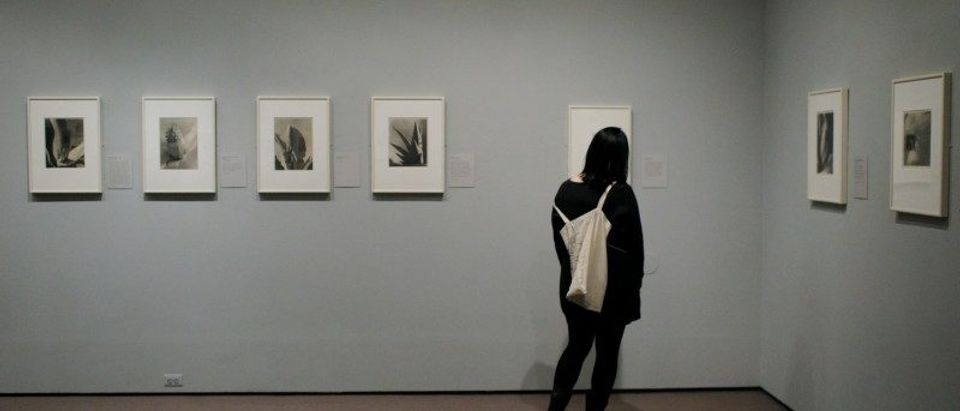Is President Trump right to oppose the National Endowment for the Arts (NEA)? Well, art lifts us up and inspires the creativity of future generations. But government funds are precious and current NEA projects have a liberal bias.
There’s another way: maintain the NEA but broaden its mission to welcome conservative voices. The government’s token but symbolically valuable contribution to American creativity can continue, – but inclusive of all citizens, whatever their ideologies.
The NEA isn’t just liberal; it is virtually uniformly leftist. Take its leadership. Eight of the 17 members of the National Council on the Arts use the term “social justice” in their bios or referring to themselves. One is a former Democrat Congressman, one writes for the Huffington Post, and one is a six-figure Democratic donor. True, one is a Republican who sang at President Trump’s Inauguration. And three appear apolitical. But the vast majority are quite open about their leftist or far-leftist political orientation. And the lower “peer” panels judging grants are drawn from artists with a similar worldview.
Not surprisingly, then, NEA grants are skewed harshly leftward. In reviewing summaries of more than 400 recent grants I found that many were apolitical, at least a quarter were hard-left, and literally none reflected a clear conservative worldview. Project descriptions were peppered with leftist buzzwords like “feminism,” “racial injustice,” “queer,” “climate change,” and “decolonialism.” Conservative equivalents like “limited government,” “sanctity of life,” and “secure borders” were totally absent.
Now, the NEA claims it’s not political: projects undergo ”rigorous peer review, which ensures that the awards are based on merit, not on policy aims or on political favoritism.” But when the peers doing the reviewing are drawn from the same self-sustaining pool of left-of-center arts professionals, conservative projects don’t stand a chance.
How would a 1950s black woman react to an all-white arts panel telling her “Black applicants get equal consideration”? The analogy is actually perfect. Women and people of color have enlivened and invigorated the American arts scene, but only after being welcomed and encouraged to participate fully. Far from the kind of “affirmative action” conservatives distrust, broadening the canvas on which the American experience is painted simply makes for better art.
So what would conservative NEA grants look like? Below are some examples of recent far-left NEA grants – and unlike some conservatives, I object to none of them. I just think similar but right-of-center projects (I’ve invented proposals below) deserve comparable funding.
The NEA granted:
- $10,000 to Theatre of the Emerging American Moment to support a musical piece called “Primer for a Failed Superpower” exploring poverty, war, racial injustice, and the environment.
The NEA could fund a similar musical piece called “Primer for the Greatest Country on Earth” exploring the unprecedented success of the first nation truly built on freedom, opportunity, growth, and ingenuity.
- $40,000 to “Theatre of the Oppressed,” which teaches homeless people theater skills and helps them perform their stories on stage.
The NEA could also fund “Bootstrap Theatre,” to teach homeless participants drama skills they can use to show how hard work, savings, and traditional families can facilitate an end to poverty for those who really try.
- $15,000 to SITE Santa Fe for an exhibition that explored worldwide problems including the impact of decolonialism, the earth’s changing ecosystem, and racial inequality.
The NEA could fund a similar examining the socialism-based devastation of Venezuela and Cuba, economic damage from extreme environmentalist measures, and the dangers multiculturalism poses in a nation whose slogan is “out of many, one.”
- $25,000 to the Lambda Literary Foundation to support LGBT writers and bring them into high school and college classrooms for reading and discussion.
The NEA could also fund a similar program to bring Evangelical, Mormon, and Orthodox Jewish writers into high school and college classrooms.
Of course, NEA panels don’t even consider right-leaning proposals because conservatives know they’d never be accepted – a vicious cycle that can only be broken with strategies borrowed from efforts to include of artists of color. That means outreach to people from conservative areas, of traditional religions, and with conservative worldviews. Accomplished artists can offer mentorships across the ideological divide, and the NEA must to take risks to bolster fledgling conservative artists.
The good news is that for at least two years, conservatives get to write the rules. Congress can overhaul the NEA and the National Council on the Arts to ensure that decision-makers reflect ideological diversity, and that grants very quickly start going to manifold projects on conservative themes, shepherded by conservative talent.
To be clear, I’m not promoting conservative inclusion in the arts as a covert strategy to spread conservative values. Yes, talented artists with a particular outlook can create magnificent non-propagandistic works that unsettle people’s worldviews. But the most important reason for a rightward overhaul of the American arts scene is to make better art.
American art flourishes most when infused with the creativity of once-marginalized groups. We got jazz and R&B from African Americans, whereas Jews and gay men shaped the theater. Most recently, in weaving African-American and Latino hip-hip styles into the American musical theater tradition, Lin-Manuel Miranda created an artistic landmark, Broadway’s Hamilton.
We conservatives are pretty talented people. Imagine what our contributions might be.
That raises an interesting question: if conservatives got their fair share of NEA money, would liberal NEA supporters sustain their enthusiasm for federal arts funding? I sure hope they would. Because if they wouldn’t, maybe their support for public arts funding was about ideology – and not art – all along.
Me, I want more art. Start handing out the smocks and tuning up the tubas. On stage, everyone. Everyone.
David Benkof is a columnist for The Daily Caller. Follow him on Twitter (@DavidBenkof) and Muckrack.com/DavidBenkof, or E-mail him at DavidBenkof@gmail.com.


